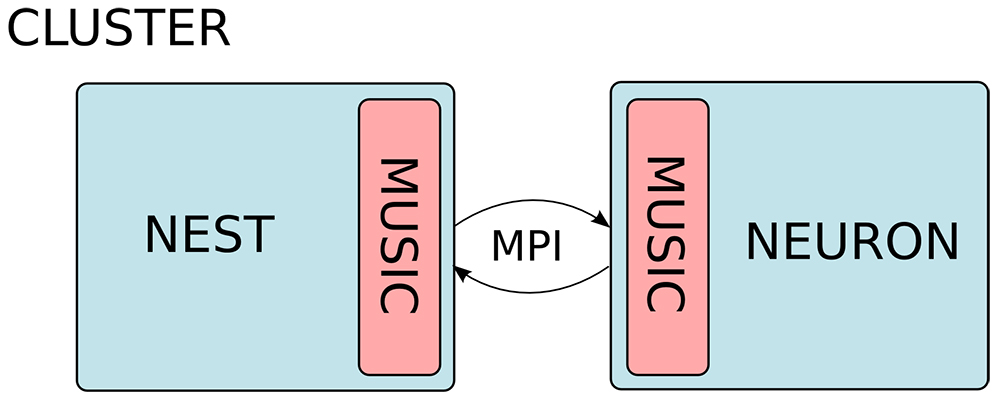Performing Multi-Scale Simulations of the Brain Using MUSIC
Mikael Djurfeldt, PDC

The brain can be investigated by making mathematical models at different scales. For example, one could consider how different regions of the brain (such as the cortex and the basal ganglia) interact with each other, or investigate the electro-chemical interactions between individual neurons. When building a mathematical model of the brain, a single scale is usually considered, and similarly most brain simulation software is specialised for just one scale of the brain. For example, the neuronal network simulator NEST is specialised for simulating networks of point neuron models, while the simulator NEURON is specialised for networks of compartmental neuron models where distinct ionic currents, as well as their spatial distribution, are taken into account. However, there are times when brain modelling is treated as a multi-scale problem where different models cover different scales. In such situations, it can be desirable to use different simulators or even neuromorphic systems. This raises the question of how to effectively combine the different models and associated software effectively.
MUSIC is one solution to this problem. It is a type of coupling software, developed at PDC, that can be used for applications in the computational neuroscience domain. MUSIC makes it possible to co-simulate a single brain model covering multiple scales by coupling different simulators, such as NEST and NEURON, as well as neuromorphic hardware and virtual environments.

The development of MUSIC has been supported by the Human Brain Project (HBP), a flagship project funded by the European Commission. As such, MUSIC is part of an effort to create a digital research infrastructure, which is called EBRAINS. Earlier this year, EBRAINS was accepted as a European Strategy Forum on Research Infrastructures (ESFRI) project (see www.esfri.eu/latest-esfri-news/new-ris-roadmap-2021 ).
The EBRAINS infrastructure offers a collection of services to the neuroscience community through a set of national nodes, and planning for the creation of a Swedish EBRAINS node is currently underway. In the future, the MUSIC software may be made available to brain researchers and software developers through EBRAINS in conjunction with a range of support services (such as training researchers to use MUSIC for multi-scale brain simulations, training application developers so their software can easily be incorporated into MUSIC, and implementing new features in MUSIC to further the possibilities of multi-scale brain simulations).
At this stage, the next steps in the development of MUSIC are focused on: extending the MUSIC-neuromorphic hardware interface, providing support for unified descriptions of MUSIC-enabled multi-scale models in the popular model specification language PyNN, and improving the MUSIC documentation and adding better support for debugging.
If you are interested in using MUSIC for your brain-related research or developing applications to work with MUSIC, please contact Mikael Djurfeldt ( mdj@pdc.kth.se ) for further information.
